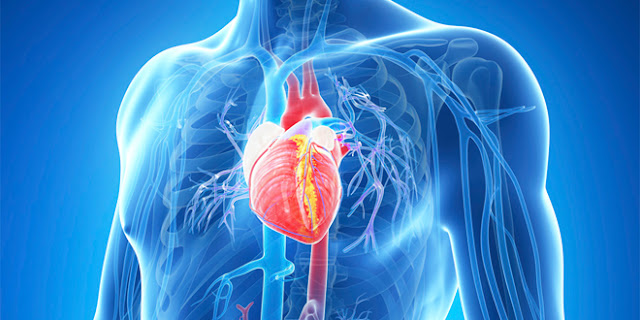
to choosing Jump to: Positive Symptoms Negative Symptoms Cognitive Symptoms Link between Schizophrenia & Depression Treatment Schizophrenia is a chronic mental disorder that affects how a person thinks, feels, and behaves. Although schizophrenia is not as common as other mental disorders (the lifetime prevalence of the disorder is estimated to be between 0.3%-0.7%), it can cause significant impairment in occupational and social functioning. 1 The psychotic features of schizophrenia typically emerge between the late teens and mid-thirties, with the peak age onset of the first psychotic episode between the early to mid-twenties. The symptoms of schizophrenia involve a range of cognitive, behavioral, and emotional dysfunctions. The symptoms of schizophrenia fall into three categories: Article continues below Concerned about Schizophrenia? Take our 2-minute Schizophrenia quiz to see if you may benefit from further diagnosis and treatment. Take Schizophrenia Quiz Positive symptoms Positive symptoms include psychotic behaviors and can cause people diagnosed with the disorder to lose touch with reality. Hallucinations Delusions Thought disorders Movement disorders Negative symptoms Negative symptoms affect emotions and behaviors. Diminished emotional expression Flat affect Decreased feelings of pleasure Hostility and aggression Cognitive symptoms Cognitive symptoms are common and associated with occupational and social impairment. Memory deficits Poor executive functioning (difficulty understanding information and using it to make decisions) Slow processing speed Difficulty inferring the intentions of other people (theory of mind) Deficits in language function Schizophrenia and depression About 25% of people diagnosed with schizophrenia meet the criteria for depression . 2 Depressive symptoms can occur throughout all phases of the illness, including during psychotic episodes, and may be associated with themes of loss and hopelessness. The prevalence of major depressive disorder is approximately 7%, with marked differences by age and gender. 3 The prevalence for 18-29-year-olds is threefold higher than that of 60-year-olds, and the prevalence in women is 1.5-3-fold higher than men. Major depressive disorder can occur at any age, although peak onset is in the 20s. The essential feature of major depressive disorder is a period of at least two weeks during which there is loss of interest or depressed mood that represents a change in functioning as characterized by exhibiting five (or more) of the following: Depressed mood most of the day, nearly every day Diminished interest in all, or nearly all, activities most of the day, nearly every day One of these first two symptoms must be present to make the diagnosis. Significant weight loss or gain or change in appetite (decrease or increase) nearly every day Sleep disturbance (insomnia or hypersomnia) nearly every day Psychomotor agitation (restlessness) or retardation (slowing down) nearly every day Fatigue or loss of energy nearly every day Feelings of guilt or worthlessness nearly every day Decreased ability to think or concentrate or make decisions nearly every day Recurrent thoughts of death, recurrent suicidal ideation, a suicide attempt or a specific plan for committing suicide. To meet the criteria for major depressive disorder, the symptoms must cause significant impairment in occupational, social, or other areas of functioning and the symptoms may not be attributable to another medical condition, including substance abuse. Depressive symptoms with schizophrenia exacerbate deficits in psychosocial functioning and increase the risk of suicide. Approximately 5%-6% of individuals with schizophrenia die by suicide and 20% attempt suicide, but the risk of suicidal behavior exists at all times during major depressive episodes. Treatment Treatment is usually life long and can involve a combination of medication management, psychotherapy, and support services. Medication Medication is central to effective treatment of schizophrenia. Antidepressants prescribed in tandem with antipsychotics have a therapeutic role in management of depressive symptoms in schizophrenia. Psychotherapy Individual therapy helps individuals with schizophrenia and major depressive disorder normalize thought patterns and learn to cope with stress. It also helps prevent relapse. Family therapy provides support and education to family members caring for schizophrenic individuals. Group therapy can help reduce stigma and provide social support. This can reduce loneliness. Support services Most individuals with schizophrenia need daily living support. Social skills training improves communication and helps individuals work on participating in daily activities, while vocational training helps individuals prepare for, find, and maintain employment. Hospitalization Hospitalization might be necessary during times of crisis, particularly during depressive episodes, to ensure safety and proper self-care. Article Sources 1. American Psychiatric Association, Diagnostic and Statistical Manual of Mental Disorders, Fifth Edition, American Psychiatric Publishing, Washington, DC, 2013: Pages 99-105. 2. Siris SG. Depression in schizophrenia: perspective in the era of atypical antipsychotic agents. American Journal of Psychiatry 2000; 157: 1379-1389. 3. American Psychiatric Association, Diagnostic and Statistical Manual of Mental Disorders, Fifth Edition, American Psychiatric Publishing, Washington, DC, 2013: Pages 160-168. Last Updated: Nov 27, 2017 right this moment
severely Schizophrenia and Depression do business from home
EmoticonEmoticon